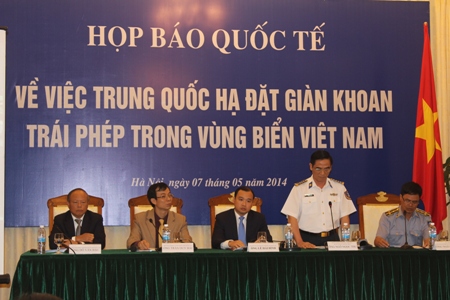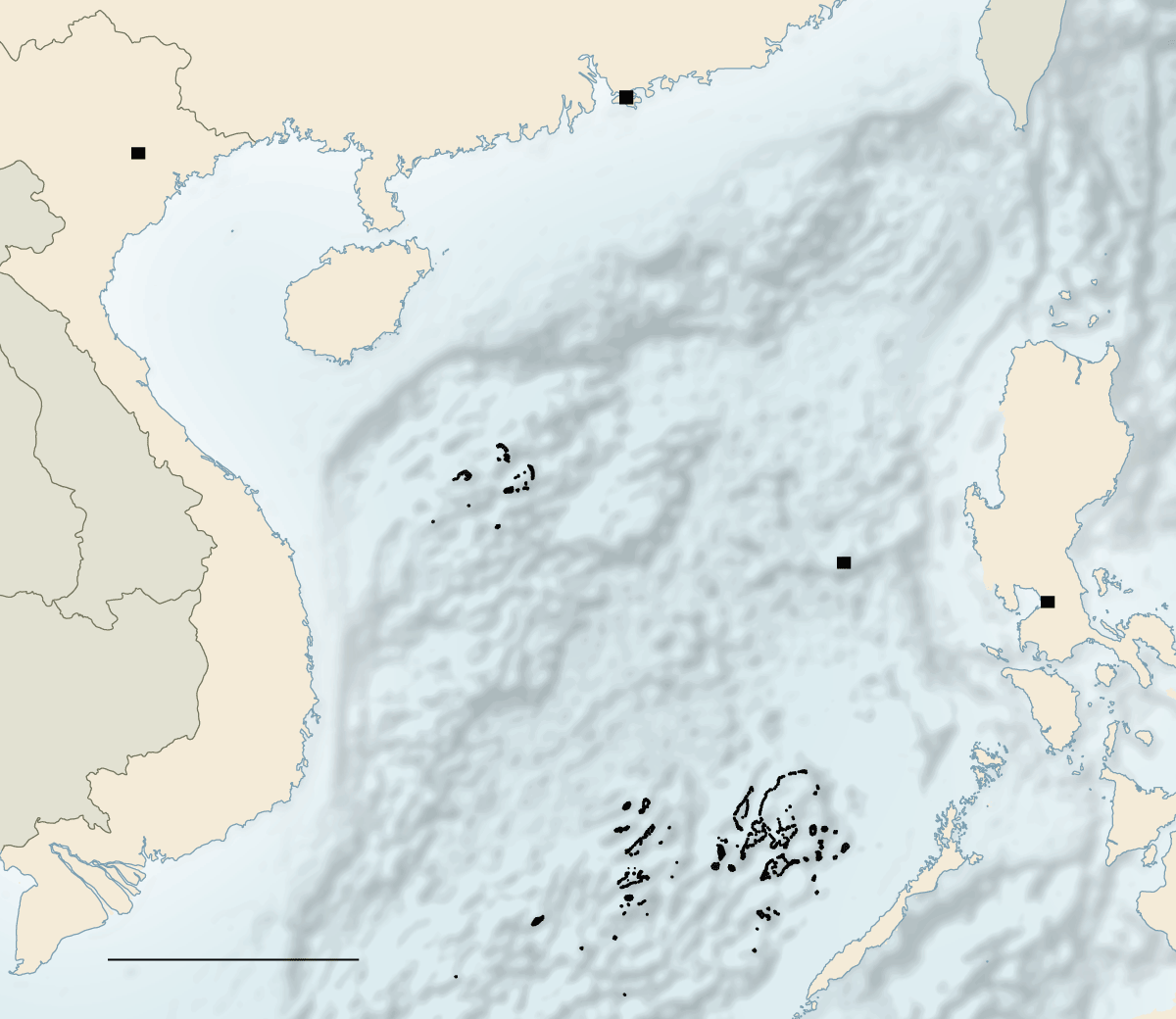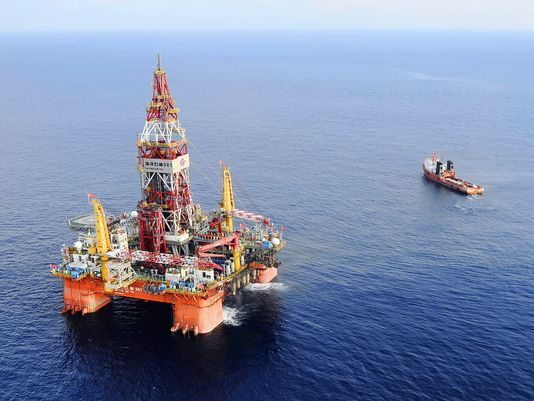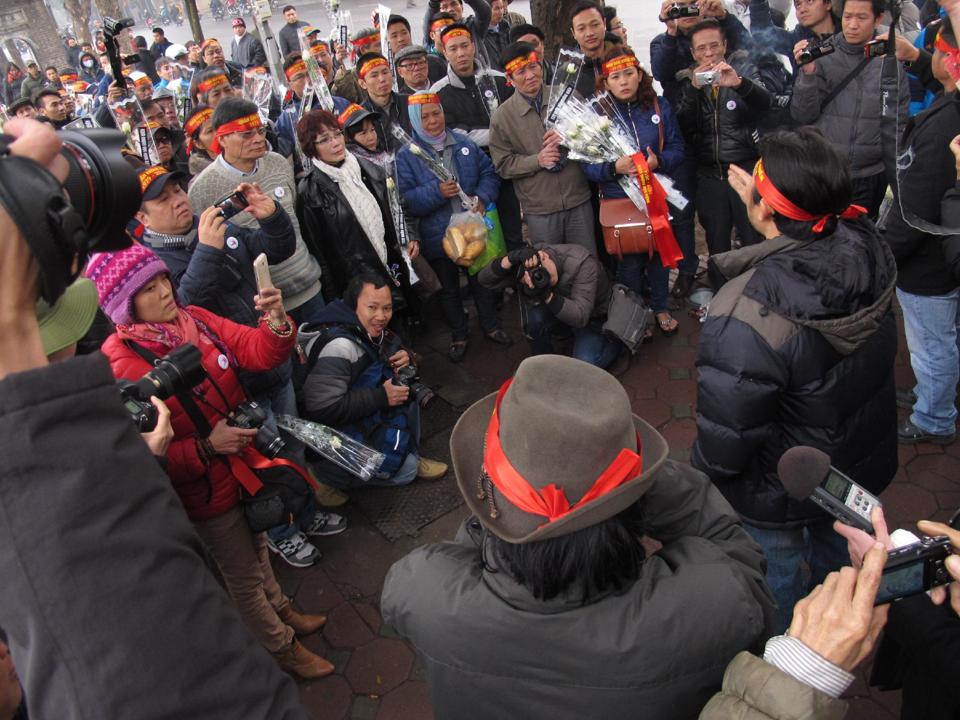by Admin | Jun 10, 2014 | News
(BGF) – On May 9, an US bipartisan group of senators, including Senators Robert Menendez, Marco Rubio, Ben Cardin, Jim Risch, and John McCain and Senator Patrick Leahy made a statement about the Maritime dispute in South China Sea, called recent actions by Chinese ships as “deeply troubling” and “threaten the free flow of global commerce in a vital region”. China’s unilateral declaration of an air defense identification zone in November and its ongoing harassment of Japanese vessels around Japanese-administered territory in the East China Sea all raise serious questions about China’s approach to regional security.
Click here to read the full press release or visit the US Senate Committee on Foreign Relations website.
Senators Express Concerns over Maritime Dispute in South China Sea, Call Chinese Actions “Troubling”
May 9, 2014
Washington, DC – A bipartisan group of senators called recent actions by Chinese ships in the South China Sea “deeply troubling,” and urged their colleagues to pass a senate resolution reaffirming support of the U.S. government for freedom of navigation in the Asia-Pacific region and for the peaceful diplomatic resolution of outstanding territorial and maritime disputes.
The statement was issued by the co-sponsors of Senate Resolution 412, Senators Robert Menendez (D-NJ), Marco Rubio (R-FL), Ben Cardin (D-MD), Jim Risch (R-ID), and John McCain (R-AZ) – all members of the Senate Foreign Relations Committee – and Senator Patrick Leahy (D-VT).
“China’s recent movement of an oil drilling rig escorted by military and other ships into disputed waters in the South China Sea off the coast of Vietnam — and the subsequent aggressive tactics used by Chinese ships, including the ramming of Vietnamese ships – is deeply troubling. These actions threaten the free flow of global commerce in a vital region. China’s unilateral declaration of an air defense identification zone in November and its ongoing harassment of Japanese vessels around Japanese-administered territory in the East China Sea all raise serious questions about China’s approach to regional security.
“Freedom of navigation, including freedom of operation for the U.S. Navy and other lawful uses of the sea and airspace in East Asia, are important to the prosperity of the United States and to the safety of the entire region. We urge the administration to make clear to China at the highest levels that territorial claims and disputes must be resolved peacefully, diplomatically and consistent with international law. Unilateral attempts to change the status quo or the use of force, coercion and intimidation are unacceptable and will only lead to instability.
“In April, we introduced a resolution which reaffirms U.S. support for freedom of navigation and operation in the region and urges all parties involved in territorial claims and disputes to seek peaceful diplomatic resolution of those disputes. We hope that our colleagues will join us in sending a strong message in response to these provocative actions by passing the resolution as soon as possible.”
by Admin | Jun 10, 2014 | News
(BGF) – Forbes reported that that six Vietnamese craft were injured in a collision on May 4 as China ships intentionally rammed two Vietnamese Sea Guard vessels. The tensions has escalated in the South China Sea as China brought its drilling rig in waters which claimed by both Vietnam and China. Beijing also brought a fleet of about 80 vessels to keep the Vietnamese from stopping the oil rig deployment.
Click here to read the full article or visit the Forbes website.
China’s Vessels Ram Vietnamese Craft In South China Sea
May 7, 2014 | By Gordon G. Chang
 (Photo credit: Dantri.com.vn)
(Photo credit: Dantri.com.vn)
On Wednesday, Vietnamese officials announced that one of China’s ships intentionally rammed two of their Sea Guard vessels. The incidents took place on Sunday, the 4th. Six were injured, according to Hanoi.
“Chinese ships, with air support, sought to intimidate Vietnamese vessels,” said Tran Duy Hai of the Foreign Ministry at a news conference. Other officials said six other Vietnamese craft were hit.
The incidents occurred after China National Offshore Oil Corp., better known as CNOOC , had on May 2 towed a deep-water rig, the size of several football fields, to an area that Hanoi claims is within its exclusive economic zone, near the Paracel Islands. Beijing, with its infamous nine-dashed line on its maps, claims about 90% of the international waters of the South China Sea as an internal Chinese lake. The expansive—and largely indefensible—claim overlaps the coastal waters of Taiwan, the Philippines, Malaysia, Brunei, and Indonesia as well as Vietnam.
Beijing brought a fleet of about 80 vessels to keep the Vietnamese from stopping the oil rig, designated HD-981. CNOOC called HD-981 a “strategic weapon”at its launch in 2012.
Click here to continue reading.

by Admin | Jun 10, 2014 | News
BEIJING (NYT) — It is the pride of China’s state-run oil industry and the nation’s first deepwater drilling rig, a vessel as big as a football field and as tall as a 40-story building, with a $1 billion price tag. Last week, it crawled through the South China Sea, pulled by heavy-duty tugs, and parked in one of the most sensitive spots possible, about 17 miles off a speck of an island claimed by both China and Vietnam.
The Vietnamese, at times embraced in brotherly Communist Party fealty by China, were taken by surprise. Hanoi assumed the rig, known as HD-981, was just passing through, people close to the government said.
At least twice in recent years, China has sought to explore these waters and backed down after protests by Vietnam. Just six months ago, during a visit of the Chinese prime minister to Hanoi, the two sides announced that they would try to find ways to jointly develop oil and gas fields.
That good will evaporated this week when Beijing made clear the drilling rig was staying put. It set off four days of confrontation, with dozens of Chinese and Vietnamese naval vessels ramming one another and China using water cannons in a standoff that threatens to push a region known for its economic development toward military conflict.
China has not been shy in recent years about making broad claims to control much of the South China Sea. But by installing an expensive drilling rig in disputed waters, it now appears more willing to act first and invite diplomacy later. It is in effect creating “facts” in the water that its regional rivals, and ultimately the United States, must either accept or fight.
China signaled it would take unilateral steps last year, when it declared an air defense zone over parts of the East China Sea that includes islands at the center of a long-smoldering dispute with Japan. In the battle of wills with Vietnam, China has unleashed a new and potentially powerful tool in its battle for territory: its oil industry and the rigs a state oil-company official once called “our mobile national territory.”
Click here to continue reading.
by Admin | Jun 10, 2014 | News
(BGF) – The news of USA Today reported that Vietnamese ships and Chinese naval vessels collided Wednesday in the South China Sea as Hanoi sought to prevent Beijing from setting up an oil rig in waters claimed by both nations.
Click here to read the full article or visit the USA Today website.
Vietnam tries to stop China oil rig deployment
May 7, 2014 | By Chris Brummitt in Hanoi
 (Photo Credit by Jin LiangKuai, AP)
(Photo Credit by Jin LiangKuai, AP)
HANOI, Vietnam (AP) — Vietnamese naval vessels and Chinese ships collided Wednesday in the South China Sea as Hanoi sought to prevent Beijing from setting up an oil rig in an area claimed by both nations, a Vietnamese government official said.
The official said no shots were fired and there were no reports of injuries in the incident, the most serious in years between the two countries at sea. If neither side steps down, clashes could break out between the two navies in what has long been regarded as a possible global flashpoint.
China’s stationing of the oil rig over the weekend has been seen as one of its most provocative steps in a gradual campaign of asserting its sovereignty in the South China Sea, parts of which are also claimed by Vietnam, the Philippines and other Southeast Asian nations.
Two foreign diplomats said Vietnam dispatched up to 29 armed naval and coast guard ships to areas near the oil rig when it became aware of China’s intentions. Citing a Chinese diplomat, one said the Vietnamese deployment was meant to be a “show of force” to get Beijing to withdraw the rig.
All spoke on condition of anonymity because of the sensitivity of the information.
Click here to continue reading.
by Admin | Jun 10, 2014 | News
(BGF) – The Associated Press reported that Yi Xianliang, deputy director-general of Chinese Ministry of Foreign Affairs’ Department of Boundary and Ocean Affairs, insisted in a press conference on May 8 that China has “every right to drill for oil off Vietnam’s coast” and China’s operations in the waters were “completely legal, legitimate and justified” because the waters were “China’s inherent territory.”
China has been increasingly pressing its claims in the South China Sea, which it claims almost in its entirety. This is bringing it into conflicts with Vietnam, the Philippines, Malaysia, Brunei and Taiwan, which also claim parts of the water.
Click here to read the full article or visit the AP website.
China insists it has right to put rig off Vietnam
May 8, 2014 | By Chris Brummitt in Hanoi and Christopher Bodeen in Beijing
 (Photo Credit: AP)
(Photo Credit: AP)
BEIJING (AP) — China insisted Thursday it had every right to drill for oil off Vietnam’s coast and warned its neighbor to leave the area around the deep-sea rig where Chinese and Vietnamese ships are engaged in a tense standoff.
With the ships jostling each other since China deployed the rig last weekend in disputed South China Sea waters, the United States warned both sides to de-escalate tensions and urged China to clarify its claims to the territory.
The stalemate underlines the apparently intractable nature of many of China’s territorial disputes with its neighbors and the ship standoff — with both sides accusing the other of ramming ships — has raised the possibility of a conflict in the South China Sea’s most serious incident in years.
Vietnam’s main stock market index recorded its biggest one-day drop since 2001 on fears of a protracted stalemate or possible conflict between the neighboring nations, which have fought two naval skirmishes in the waters since 1974 and have history of conflict going back 1,000 years.
The standoff started May 1 when China moved a deep sea oil rig into waters close to the Paracel Islands in what most analysts believe was an especially assertive move to help cement its claims of sovereignty over the area. Vietnam, which says the islands belong to it, immediately dispatched ships.
Click here to continue reading.
by Admin | Jun 10, 2014 | News
(BGF) – On May 7, The US Senator John McCain released a statement on his website that China’s oil drilling off the coast of Vietnam and its deployment of dozens of naval vessels to support that provocative action serves only to escalate tensions in the South China Sea, and affirmed that China bears “full responsibility” to this unilateral attempt.
Below is the Statement or visit Senator John McCain website.
Statement by Senator John McCain on Conflict between China and Vietnam in South China Sea
Washington, D.C. – U.S. Senator John McCain (R-AZ) today released the following statement on the latest reports regarding the escalating conflict between China and Vietnam over a Chinese oil rig near the Paracel Islands: “China’s decision to begin drilling for oil off the coast of Vietnam, and its deployment of dozens of naval vessels to support that provocative action, is deeply concerning and serves only to escalate tensions in the South China Sea. Chinese ships have swarmed and rammed Vietnamese Sea Guard vessels in yet another instance of aggressive maritime harassment. There should be no doubt that China bears full responsibility for this unilateral attempt to change the status quo. “These Chinese actions rest on territorial claims that have no basis in international law. In fact, China’s drilling is occurring squarely within Vietnam’s Exclusive Economic Zone, as defined clearly under international law. It is incumbent upon on all responsible nations to insist that China’s leaders take immediate steps to deescalate tensions and revert to the status quo ante.”
by Admin | Jun 10, 2014 | News
(BGF) – According to the Voice of Vietnam News (VOV), Vietnam government affirmed the China’s drilling rig HD-981 is operating within Vietnam’s exclusive economic zone and continental shelf and that “Any activity conducted by foreign countries in Vietnam’s waters without permission is illegal and void”.
Click here to read the full article or visit the VOV’s website.
Vietnam opposes illegal foreign activities in its waters
April 5, 2014
 (Photo Credit by VOV)
(Photo Credit by VOV)
Hanoi (VOV) – Any activity conducted by foreign countries in Vietnam’s waters without permission is illegal and void, Foreign Ministry spokesperson Le Hai Binh has affirmed, adding that the country absolutely opposes it.
Binh made the statement while answering reporters’ questions on a maritime notice issued by the the China Maritime Safety Administration on May 3 saying that drilling rig HD-981 is operating in a location of 15 o 29’58’’ north latitude and 111 o 12’06’’ east longitude from May 2 to August 15.
The operation location of the drilling rig stated in the notice is totally within Vietnam’s exclusive economic zone and continental shelf, about 120 nautical miles from its coast, he said.
“Vietnam has full historical evidence and legal bases affirming its soveereignty over Truong Sa and Hoang Sa archipelagoes as well as sovereign right and jurisdiction over its exclusive economic zone and continental shelf in line with the 1982 United Nations Convention on the Law of the Sea,” he stressed.
by Admin | Jun 10, 2014 | News
(BGF) – According to AP News, in an effort to manage the wave of indignation of anti-China protesters, Hanoi’s government deployed dancers to stop them from making speeches and getting close to the statue of Ly Thai To, the founder of Hanoi.
Click here to read the full article.
Vietnam deploys dancers to foil protests
February 16, 2014 | By Chris Brummitt
HANOI, Vietnam (AP) — Anti-China protesters hoping to lay wreaths at a famous statue in the Vietnamese capital on Sunday were obstructed by an unusual sight of ballroom dancers and an energetic aerobics class held to a thumping sound system.
 (Photo Credit: Associated Press)
(Photo Credit: Associated Press)
The demonstrators suspect the government deployed the dancers as a way to stop them from getting close to the statue and make their speeches inaudible. The few who tried to get close to the statue of Ly Thai To, the founder of Hanoi and a nationalist icon, were shooed away.
The protesters were marking the 35th anniversary of a bloody border war between China and Vietnam, where anger over Beijing’s increasingly assertive territorial claims on islands in the South China Sea that Hanoi insists belong to it is already running high.
Relations with China, Vietnam’s ideological ally and major trading partner, are a highly sensitive domestic political issue for Hanoi’s rulers. They don’t want anger on the street against China to spread to other areas of its repressive rule.
Click here to continue reading.
by Admin | Jun 9, 2014 | News
(BGF) – A CCTV4 documentary video which appeared online in early January, provided a detailed history of the China Marine Surveillance (CMS), revealed an incident that occurred on June 30, 2007 between various government vessels from Vietnam and China in the disputed waters off the Paracel islands in the South China Sea, and a new frame of reference for analyzing wider debates over Chinese assertiveness and the U.S. “rebalance” to the region. In addition, the video also provides a number of new insights into organizations such as CMS and its parent organization, the State Oceanic Administration (SOA), including the tactics and command and control arrangements of their vessels when out at sea, The Diplomat reported.
Click here to read the full article or visit The Diplomat website.
Vietnam and China: A Dangerous Incident
February 12, 2014 | By Scott Bentley
(The Diplomat) – In early January 2014, video of a recent CCTV4 documentary “Blue Frontiers Guard” appeared online, providing a detailed history of the China Marine Surveillance (CMS) spanning from roughly 2007 up until the present. The documentary, in Chinese with English subtitles, begins with footage of an incident that occurred on June 30, 2007 between various government vessels from Vietnam and China in the disputed waters off the Paracel islands in the South China Sea. The incident, having previously gone largely unreported, is covered in tremendous detail, providing a new frame of reference for analyzing wider debates over Chinese assertiveness and the U.S. “rebalance” to the region. In addition, the video also provides a number of new insights into organizations such as CMS and its parent organization, the State Oceanic Administration (SOA), including the tactics and command and control arrangements of their vessels when out at sea.
The 2007 incident apparently resulted from an attempt by a China National Petroleum Corporation (CNPC) survey vessel to conduct what the documentary termed “normal operations” in the waters off the Western Paracel islands beginning on June 26 of that year. Such operations are seen as anything but normal by the Vietnamese, who continue to claim the islands despite China having forcefully occupied them since 1974. Hanoi dispatched a fleet consisting largely of naval auxiliary vessels to prevent the Chinese from surveying the waters. A tense standoff ensued, culminating in reckless maneuvers by Chinese CMS vessels that led to a number of serious collisions, threatening the safety of all crews.
The Vietnamese vessels initially expelled the CNPC survey vessel from the area, and the China State Oceanic Administration (SOA) responded by promptly organizing a “rights safeguarding and law enforcement” campaign, dubbed Enforcement Action Code 626. According to the documentary, such operations exist outside the scope of regular enforcement patrols, and in addition to CMS ships already in the vicinity, SOA dispatched CMS vessels numbered 83 and 51 to the area as part of the campaign. They arrived on June 29 and formed up in “alert order,” with two ships both fore and aft on either side of the CNPC vessel, attempting to escort it back into the area for the second time.
Click here to continue reading.





